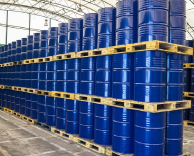How to Read and Understand Oil Can Labels for Optimal Machine Performance
Introduction
When standing in front of shelves lined with various oil cans, it can be overwhelming to choose the right one. Yet, selecting the correct oil for your machinery or vehicle is crucial. The specifications on an oil label directly affect your machine's service life, reliability, maintenance costs, and safety. This article will guide you through reading and understanding these labels so you can make informed decisions.
Why Reading an Oil Can Label Matters
The information on an oil can label goes beyond branding. It provides essential details about the oil’s performance under different conditions, ensuring it meets the requirements of your machinery. Choosing the wrong oil can result in reduced efficiency, increased wear, and even equipment failure. Conversely, the right oil helps extend the lifespan of your equipment, reduces maintenance costs, and enhances performance.
Key Organizations Behind Oil Standards
Several organizations work together to create oil performance standards
API (American Petroleum Institute)
The API licenses and certifies engine oils to ensure they meet the lubrication, warranty, and maintenance requirements of original equipment manufacturers (OEMs). The API Donut logo is the industry standard for identifying certified oils.
SAE (Society of Automotive Engineers)
The SAE develops the numerical code system for grading oil viscosity. This ensures that oils meet standardized performance metrics for automotive, aerospace, and commercial vehicles.
Decoding the API Donut Logo
The API Donut logo is a standardized marking found on most oil cans. It consists of three sections:
- Performance Level: Specifies the category of the oil (e.g., API SN, API CK-4).
- Viscosity Grade: Indicates the oil’s viscosity (e.g., SAE 10W-30).
- Energy-Conserving Statement: Found on some oils, signifying improved fuel economy.
Understanding Viscosity and SAE Grades
What Is Viscosity?
Viscosity refers to a fluid’s resistance to flow. In the context of engine oils, it’s the thickness of the oil at different temperatures. Thicker oils offer better protection at high temperatures, while thinner oils perform better in colder conditions.
Multigrade Oils and Their Benefits
Multigrade oils, such as SAE 5W-30 or 10W-40, are designed to perform well across a range of temperatures. The “W” stands for “Winter,” indicating the oil’s performance in cold conditions. For instance, 10W-30 oil has the viscosity of a 10-grade oil in winter and a 30-grade oil at operating temperature.
Key Classifications on Oil Cans
Low-Temperature Viscosity (e.g., 5W)
The first number (e.g., 5 in 5W) indicates the oil’s viscosity at low temperatures. Lower numbers mean thinner oil, which flows more easily in cold climates, aiding in cold starts.
High-Temperature Viscosity (e.g., 30)
The second number (e.g., 30 in 5W-30) shows the oil’s viscosity at normal operating temperatures. Higher numbers indicate thicker oil, which provides better protection in hot conditions.
Machine Performance and Oil Selection
Ensuring optimal machine performance begins with selecting the right oil. Using the wrong lubricant can result in increased friction, overheating, and wear, ultimately reducing the efficiency and lifespan of your equipment. Conversely, choosing high-quality oils tailored to your equipment’s needs can unlock numerous benefits, including improved energy efficiency, reduced downtime, and enhanced productivity.
Here’s how to make the right choice:
- OEM Recommendations: Always follow the specifications outlined in your equipment’s manual.
- Climate Conditions: Select oils suited for the temperature range of your operating environment. For instance, 5W-30 is better for colder climates, while 15W-40 is ideal for warmer areas.
- Usage Type: Heavy-duty engines may require oils with specific additives for enhanced performance.
Tips for Proper Oil Selection
- Check the API Certification: Ensure the oil meets the API standards for your vehicle.
- Verify Viscosity Grades: Match the SAE grade with the operating temperature of your region.
- Avoid Mixing Oils: Stick to one type of oil for consistent performance.
- Inspect the Label: Look for additional certifications like ACEA (European Automobile Manufacturers’ Association) if applicable.
Conclusion
Understanding how to read and interpret oil can labels is crucial for maintaining the health of your machinery and vehicles. By paying attention to API certifications, SAE viscosity grades, and other classifications, you can ensure optimal performance and longevity. Always consult your equipment manual and choose oils that meet the recommended standards for your specific needs.





